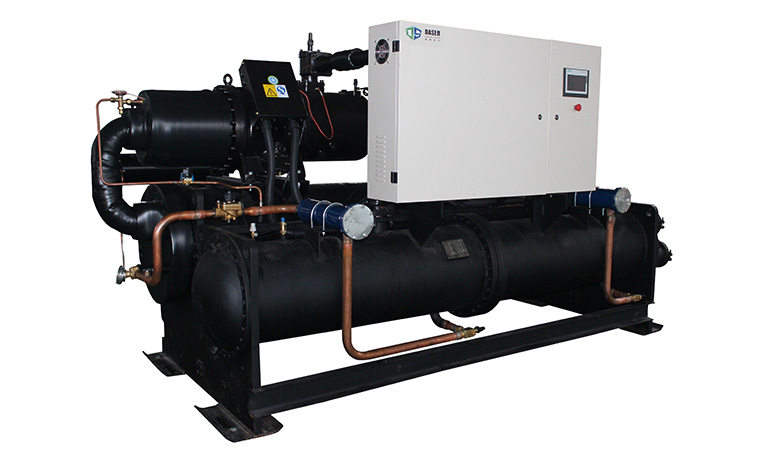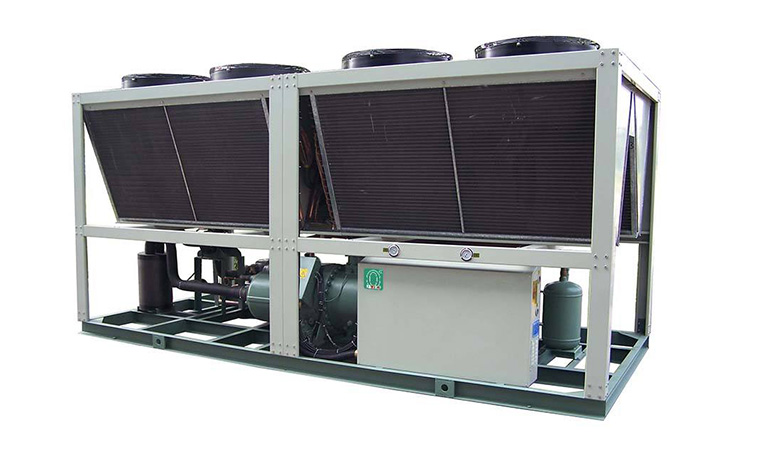Types of coolers
The different types of process coolers fall into two broad categories: (1) vapor absorption and (2) vapor compression. Vapor compression chillers are the most common and include (1) air chillers (2) water/fluid chillers. Chillers are further classified according to the type of compressor technology used: (1) centrifugal, (2) scroll, (3) reciprocating, and (4) screw.
Chillers are refrigeration systems that help cool residential/commercial spaces, machinery, industrial operations, and industrial chemicals. These units are energy-efficient, cost-effective, and time-effective. Without these systems, production goals are often not achieved.
Types of Chillers
Chillers fall into two main categories: vapor compression chillers and vapor absorption chillers. Vapor compression chillers use an electro-mechanical compressor to force refrigerant around the system, while vapor absorption chillers use heat to move refrigerant around the system.
Vapor compression chillers are the most commonly used and are divided into two subcategories: air chillers and water chillers. Let’s take a quick look at how they work, their applications, and their advantages and disadvantages.

How do air and water chillers work?
Both air and water chillers have the same components: evaporator, compressor, condenser, and expansion valve. In addition, the mechanism of both is very similar. The compressor pushes the refrigerant around the inside of the chiller through the condenser, the expansion valve, the evaporator, and back to the compressor.
The main difference between an air cooler and a water cooler is how the unwanted heat is removed. With air coolers we use air to remove the heat, while water coolers use, you guessed it, water.
The Water-Cooled Screw Chiller is a lifelong investment with its energy-saving operations. It isn’t only equipped with a high-quality copper tube condenser but also an evaporator. As the name says it adopts the usage of water for cooling purposes hence water-cooled. No chiller can compete with its wide temperature range. Consumers can not only use it as a single compressor but also a multi compressor system.
Air Coolers
Air-cooled chillers use air to remove heat by forcing air through the exposed tubes of the condenser using a fan. While air coolers require more energy than water-cooled chillers, they can be a good choice when it comes to stationary cooling. Air coolers are easy to install and can often be mounted outside of a building (no additional space required). Air chillers are more prone to clogging and recirculation problems than water chillers.
How do Chillers work?
A water chiller removes heat by pumping water into a sealed condenser and dispersing it through a cooling tower. Water-cooled chillers are usually more efficient than air-cooled chillers. Using water evaporation to dissipate heat consumes much less energy than blowing air over a hot surface. This is due to the high heat capacity of water. In addition, chillers tend to last longer than air-cooled chillers.

Types of compressor technology
Air-cooled and water-cooled chillers are further classified according to the type of compressor technology used.
Centrifugal chillers
Most centrifugal chillers are water chillers (centrifugal systems are rarely found in air chillers). Centrifugal chillers are typically used for medium to large cooling loads (typically providing 150 to 6,000 tons of cooling capacity) The system provides high cooling capacity in a compact design. Centrifugal chillers work by using a rotating impeller to compress the refrigerant and force it around the chiller.
Reciprocating Chillers
These systems work by using pistons and chambers to compress the refrigerant.
Scroll Compressor Chillers
Scroll compressors are used for air and water coolers. These chillers operate by using two screw plates (one fixed and one rotating) to compress the refrigerant. Our chillers use 1 and 2 ton models of scroll compressors.
Screw Drive Chillers
Screw chillers are also used in water and air chillers and are best suited for small to medium-sized cooling loads. These chillers typically have capacities of 70 to 600 tons. Screw compressors work by using two interlocking rotating helical rotors to compress the refrigerant.
